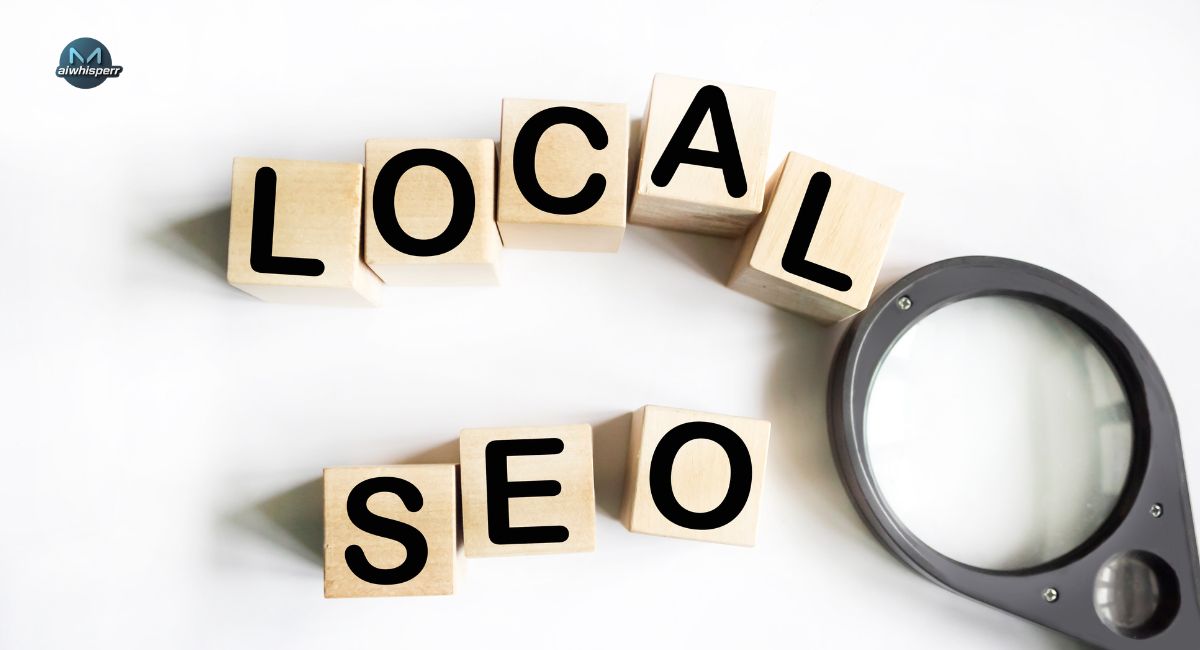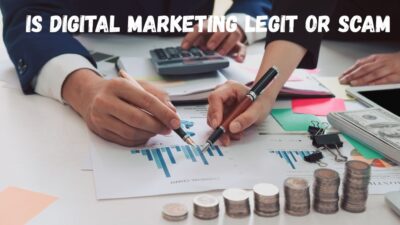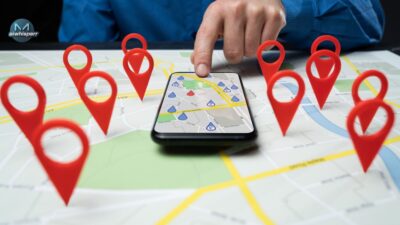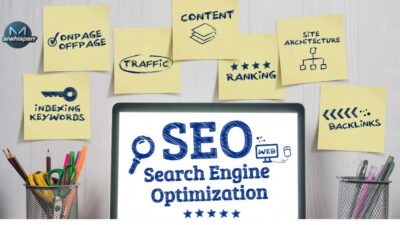How Local SEO ai WORKS
Helping small businesses to find nearby customers online is known as Local SEO. When people look for services in your area, Local SEO ai strategy shows your business in search engines. Local SEO is different from regular SEO because it focuses on location-specific keywords and community-based marketing.
To understand “what is local SEO”, think about this: When someone searches for “PLUMBER NEAR ME,” search engines look at where that person is. Then Google shows businesses close to them. That’s where “near me” searches come in. These tools help users quickly find your business. So if your Google Business Profile (GBP) is set up correctly, your business can appear in google searches.
Why Local SEO is Important for Small Businesses
Many businesses ignore local SEO, but they are missing out. With more people searching on phones, mobile search behavior has changed everything. Today, mobile local searches result in store visits 76% of the time within one day. That’s enough! If you want to rank your on google search pages and drive real traffic, local SEO ai is must.
Also, small business marketing is competitive. A good Local SEO strategy helps you stand out. You appear in the Map, which is the top 3 businesses shown in Google results. This means more eyes on your business, more clicks, and more sales. Plus, it’s cheaper than paid ads and lasts longer when done right.
How Google Ranks Local Results
Google uses three main factors for ranking locally: proximity, relevance, and prominence. Proximity means how close your business is to the person searching. Relevance checks if your business matches what your customers/clients are searching for. Prominence is how well-known your business is online. All three are part of a smart Regional SEO tactic.
Other factors include user engagement signals, like how many people click your website or call from your listing. Local citations on online business directories also help. These are mentions of your business name, address, and phone number on trusted sites. Google looks at this data to decide how much it should trust and rank you.
Setting Up and Optimizing Your Google Business Profile (GBP)
To optimize your Google Business Profile, start by claiming your listing. Add your correct address, phone number, and business hours. Pick the right business categories and upload clear images. Don’t forget the description—use location-specific keywords and explain how your business helps locals. This helps improve local search visibility.
Next, update your profile often. Answer questions, add posts, and reply to reviews. This shows Google that you’re active and trusted. Businesses that do this often rank higher in search engine results pages (SERPs) and get more visibility in the Map Pack / Local Pack.
On-Page SEO for Local Businesses
Your website needs to work with your Google Business Profile (GBP). Start by using local keyword research. Add your city and service names in titles, descriptions, and page content. This helps connect your site with local searches and improves your chance to be seen.
You should also make sure your website is ready for phones. Mobile optimization is key. Google now checks the mobile version of your site first. If your site loads slow or looks bad on a phone, you’ll lose customers and rank lower.
Local Content Strategy: What to Write to Rank Locally
To succeed with local content creation, you need to write high-quality content. Share posts about local events, interviews with nearby experts.. For example, a plumber could write about “Top Water Problems in New york.” That attracts local readers and boosts your SEO.
Also, use FAQs that answer real customer questions. This helps with voice search SEO and makes your site more useful. To rank better, include stories, stats, and info your audience actually wants. Remember, use voice search-friendly phrases to match how people talk.
Building Citations and Business Listings
Each one helps Google trust your business more. To make the most of this, use the same name, address, and phone everywhere. This consistency helps with local business listing management.
There are many online business directories in the USA where you should list your business. Examples include Angi, Thumbtack, and the Chamber of Commerce. These sites improve your search engine results pages (SERPs) and bring in more traffic from your city.
Local Link Building Strategies That Actually Work
One strong way to build backlinks from authoritative local sites is to team up with nearby businesses. Host a giveaway together or sponsor an event. When they talk about it online, they link to your site. That link shows Google your site is trusted.
Another method is to create content so good others want to share it. Post helpful blogs, charts, or videos. Also, contact local blogs or news sites. Offer to write a guest post or share expert advice. These links are gold for your Local SEO ai strategy.
Local SEO Tools You Should Use
You need the right tools To audit and improve your local SEO ai strategy. Tools like BrightLocal and Localo helps to check your local citations, track rankings, and find SEO problems. They show you what’s working and what needs fixing.
You can also use Moz Local, Semrush, and Google Search Console. These tools help with local keyword research, tracking your place in search engine results pages (SERPs), and managing your Local SEO strategy like a pro.
Common Local SEO Mistakes You Should Avoid
Many businesses forget to optimize listings on other directories. Others use different phone numbers or addresses on each site. This confuses Google and hurts rankings. Always keep your info the same to help with local business listing management.
Another mistake is skipping mobile. you’re losing local traffic, If your site isn’t mobile-friendly. To enhance user experience, make sure your site loads fast and looks great on all devices. This is vital for mobile optimization.
Local SEO Audit Checklist
A regular audit helps you fix issues fast. Use a checklist that covers your Google Business Profile (GBP), website speed, mobile layout, content quality, and citations. This improves your local search engine optimization and gives you better insights.
Check your customer reviews, backlinks, and local keywords. Make sure your business info matches on every site. If you find any issues, Fix them in the right way . That’s how you audit and improve your local SEO strategy in the right way.
FAQs About Local SEO
What’s the fastest way to improve local SEO?
The quickest wins come from completing your Google Business Profile (GBP), adding business categories, open hours, and listing customer reviews. These changes help you get into the Map Pack / Local Pack fast.
Can local SEO work without a storefront?
Yes, if you’re a service-based business, you can hide your address and still show in local results. Google allows Neighborhood SEO for home services or mobile businesses.
How long does local SEO take?
Most small businesses start seeing results in 3–6 months. Faster results come when you stay consistent with your Local SEO ai strategy, content, and backlinks.




